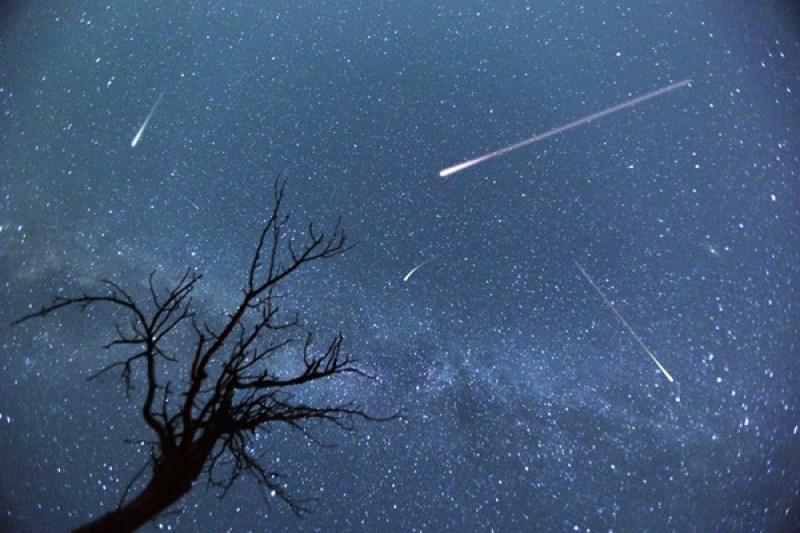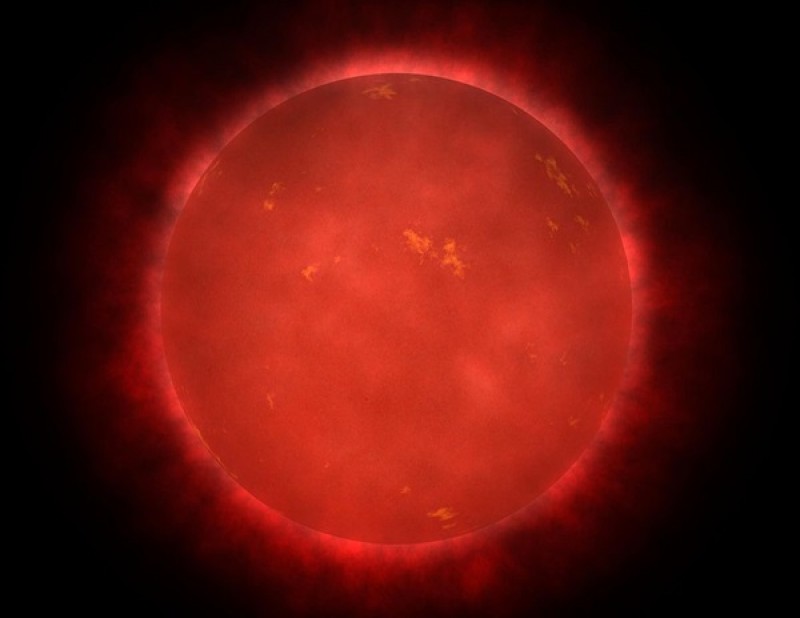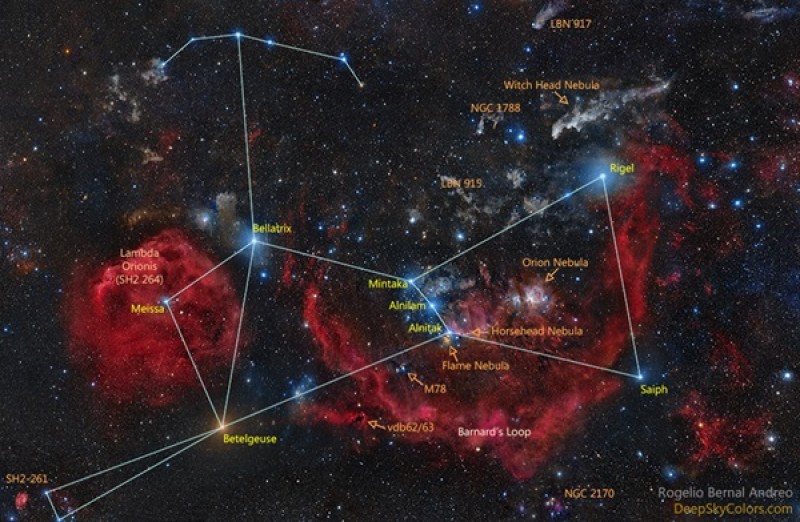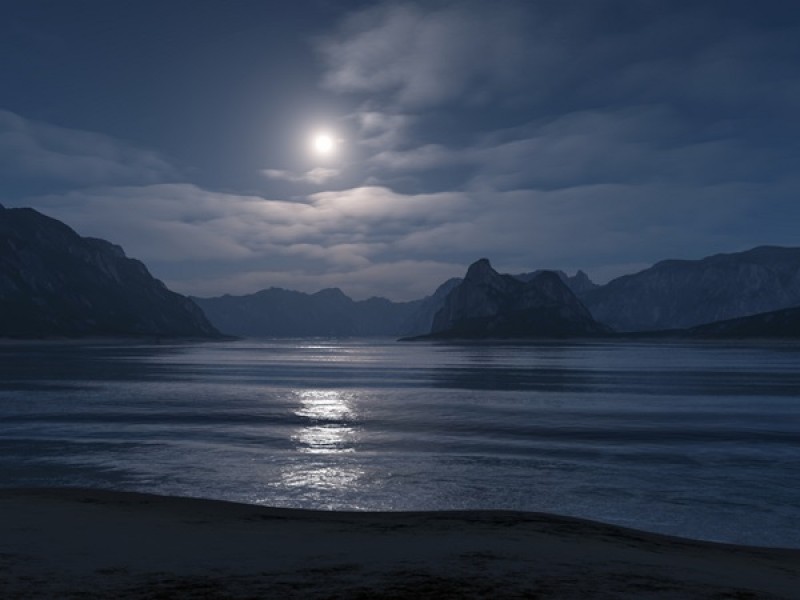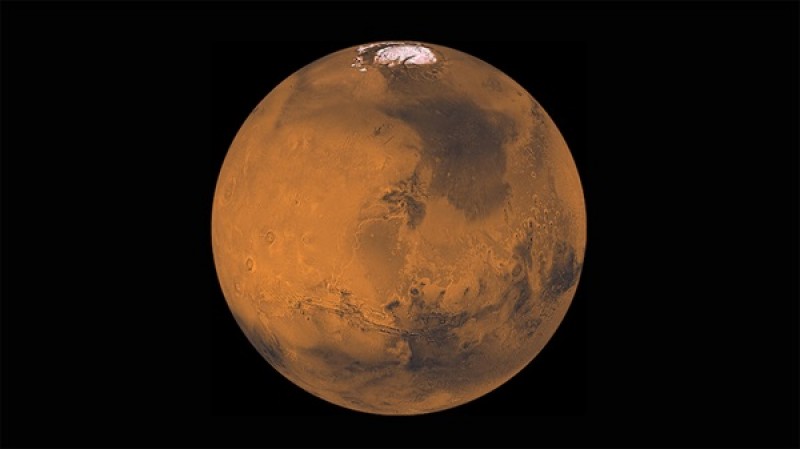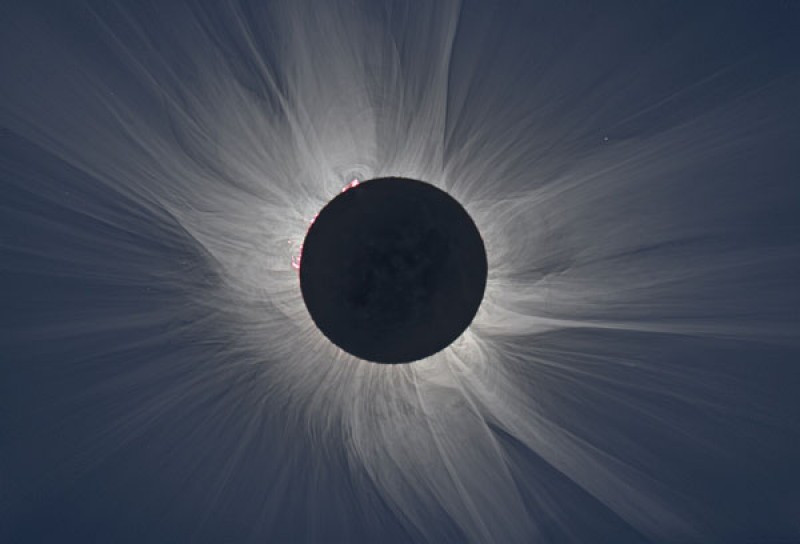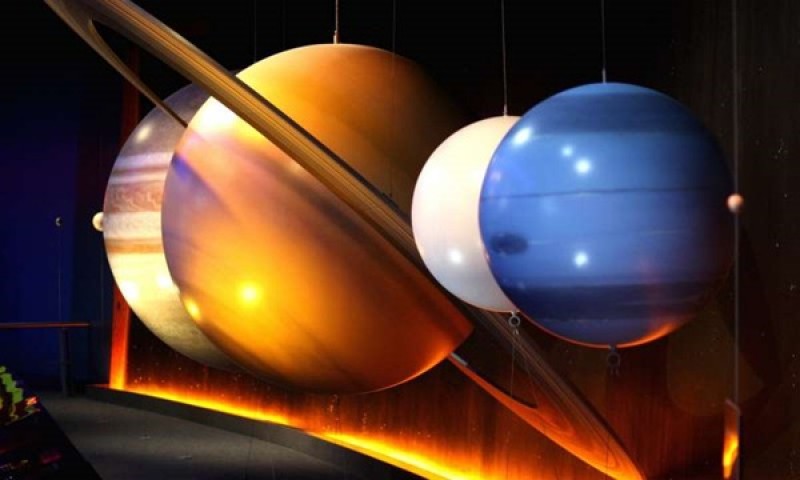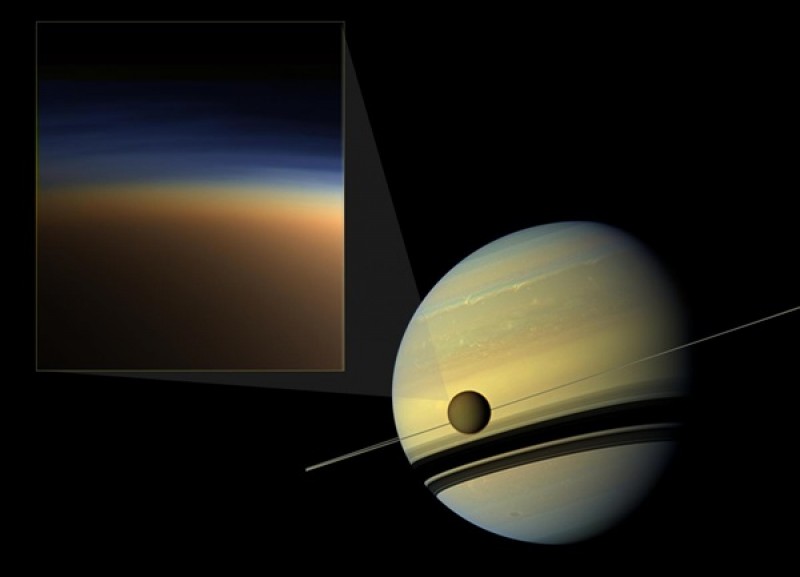Blog
Could extraterrestrial sugar help explain how life began on Earth?
Friday, December 21st 2018 07:26 PM
Extraterrestrial Sugar
Scientists have discovered derivatives of life’s building blocks in carbon-rich meteorite samples, a first. They also showed how biological compounds can form in interstellar space. These new findings support the theory that life on Earth originated with help from cosmic impacts.
Sugars and sugar derivatives are essential to life on Earth. But they, along with amino acids and other organic molecules, can be found in space as well, on asteroids and comets. Scientists have suggested that objects in space may have fallen to Earth and delivered the compounds that would spark biological processes on our planet.
Sugar and Ice
In this new study, scientists analyzed five residues from ice mixtures exposed to ultraviolet radiation in conditions simulating the interstellar medium in space. The goal was to see whether organic molecules found in life on Earth would form in a simulated space environment. In these residues, they found 2-deoxy...
Read More
Read More
Richard Branson says Virgin Galactic will take people to space before Christmas
Friday, November 30th 2018 10:36 PM
Richard Branson says Virgin Galactic is on the verge of a major achievement: It will send astronauts into space by Christmas.
The billionaire entrepreneur told CNN Business' Rachel Crane this week he is "pretty confident" his space tourism venture can achieve its milestone by the end of the year.
"We have a brilliant group of astronauts who literally believe 100% in the project, and give it their everything," he said.
The first few trips to space will be flown by test pilots without anyone else on board. Branson says he will be the first passenger. Eventually, paying tourists will also make the trip.
"I'm not allowed up until the [test pilots] have broken it in a few times, first," he said. "I would love to have gone on this very [first] flight, but [pilots] are incredibly brave people."
SpaceShipTwo, Galactic's rocket-powered plane, will fly into space after it detaches from beneath the wing of a mothership. It has been thoroughly tested on the...
Read More
Read More
Astronomers spot one of the oldest stars in the entire universe
Friday, November 9th 2018 01:39 AM
One of the oldest stars in the universe is quietly hiding out in the Milky Way some 2,000 light-years from Earth.
According to a new study published in The Astrophysical Journal, the tiny, 13.5-billion-year-old red dwarf contains barely any heavy elements at all, suggesting it formed out of a nearly pristine cloud of material leftover from shortly after the Big Bang. Furthermore, because the small star is just one-seventh the mass of the Sun and is made of primordial matter, it’s making astronomers reconsider the demographics of the very first stars. Ancient ancestorsThe first stars to form in the universe likely flicked on around 200 million years after the Big Bang. These early stars were forged out of the material that was available to them at the time — mostly hydrogen, some helium, and a touch of lithium. As these stars lived out their lives, they converted their starter elements into progressively heavier elements, which astro...
Read More
Read More
Winter is coming, sayeth Orion the Hunter
Friday, November 2nd 2018 07:37 PM
This annotated image of the Orion constellation shows the dim clouds of nebulous, glowing dust that sit in the field. The asterism Orion’s Belt (composed of the stars Altitak, Alnilam, and Mintaka) is visible near center.
The night sky’s most conspicuous harbinger of winter now rises in the east around 11 p.m. local daylight time.
The constellation Orion the Hunter appears on its side as it rises, with ruddy Betelgeuse to the left of the three-star belt and blue-white Rigel to the belt’s right. As Orion climbs higher before dawn — a result of the Earth spinning under the fixed background of stars — the figure rotates so that Betelgeuse lies at the upper left and Rigel at the lower right of the constellation pattern.Orion the Hunter is just one of 88 constellations officially recognized by the International Astronomical Union; however, it also contains two well-known asterisms and a handful of beautiful nebulae.The most f...
Read More
Read More
Why China’s artificial moon probably won’t work
Saturday, October 27th 2018 12:34 AM
To step outside on a moonlit night is to see the darkness pushed back. The reflected sunlight from our natural satellite during a nearly full moon is enough to limn the nighttime landscape in silver and allow even human eyes to penetrate the gloom. But we can always do better, right? If one moon is good, surely two is even better.One Chinese researcher thinks so, at least. Wu Chunfeng, head of the Tian Fu New Area Science Society, wants to use a satellite like an artificial moon, reflecting sunlight back to targeted areas of the Earth at night. The reflector would orbit above a city, providing enough illumination to replace lights on the ground with a steady glow and potentially saving on electricity costs.
Brighten the Night
He imagines a shiny satellite unfurling in space about 300 miles above the ground and orienting itself toward cities on the ground. One would be enough to light up around 5o square miles, he says, according to China Daily, and several working...
Read More
Read More
The sky this week for October 26 to November 4
Saturday, October 27th 2018 12:26 AM
Friday, October 26The waning gibbous Moon rises in the east around 8 p.m. local daylight time. Wait about an hour for it to climb well clear of the horizon and you’ll see it perched just west of the Hyades star cluster in the constellation Taurus the Bull. Binoculars will deliver the best views of this pretty conjunction. If you keep watching throughout the night, you’ll see the Moon pass in front of the V-shaped Hyades.Venus reaches inferior conjunction at 10 a.m. EDT. This position places the inner planet most nearly between Earth and the Sun (precisely 6° south-southwest of our star), so it is lost in the glare. But the brilliant world orbits the Sun quickly, and it will return to view before dawn in about 10 days.Saturday, October 27This evening provides skywatchers with one of their final chances to see Jupiter before it disappears in the Sun’s glow. Use binoculars to locate the giant planet some 6° above the southwestern horizon 30 minutes after sunset....
Read More
Read More
A New Look at the Solar Corona
Tuesday, October 16th 2018 08:15 PM
A view of the solar corona during the 2015 total solar eclipse in Svalbard, Norway. S. Habbal, M. Druckmüller and P. Aniol
A STEREO View
NASA’s STEREO has observed the solar atmosphere and solar wind — including coronal mass ejections like the one pictured here — for over a decade. NASA/STEREO
Despite the wealth of knowledge we’ve amassed about our nearest star, there is still a lot we don’t know about the corona — the uppermost region of the solar atmosphere. Previous observations of the outer corona have indicated that the region is smooth and lacking in small-scale structure — but is it really?
To learn more about the outer corona, a team led by Craig DeForest (Southwest Research Institute) analyzed images from a special observing campaign by NASA’s Solar Terrestrial Relations Observatory-A (STEREO-A). In a departure from its typical observing mode, STEREO-A increased its imaging cadence by a factor of fo...
Read More
Read More
The five brightest planets align in the night sky
Monday, October 15th 2018 09:42 PM
For the second time this year, the five brightest planets in our solar system — Mercury, Venus, Jupiter, Saturn, and Mars — will be visible in the night sky, at the same time.The planets will form a line that rises up from the horizon in the western sky and it will be easiest to see after sunset this Thursday, October 18. However, all month these planets will be visible in the same general areas of the sky.Mercury and Venus will be most visible west and closer to the horizon, while Saturn will be higher up in the sky and northwest, Mars will be visible even higher. The night of October 18, Venus and Mercury will be side-by-side. Because Mercury is the faintest and hardest to see of these planets, having ultra-bright Venus by its side will make Mercury much easier to see.Later in the month, on October 24, you might also be able to see Uranus and Neptune in the night sky — they just might be a little more difficult to spot.This fantastic sight doesn&...
Read More
Read More
The Jesuit astronomer who conceived of the Big Bang
Saturday, October 13th 2018 06:57 PM
In 1927, a prescient astronomer named Georges Lemaître looked at data showing how galaxies move. He noticed something peculiar – all of them appeared to be speeding away from Earth. Not only that, but the farther away they were, the faster they went. He determined a mathematical way to represent this, and connected his relationship to Einstein’s law of General Relativity to produce a grand idea: That of a universe continually expanding. It was a radical idea then, but today it fits with our conception of a universe spawned by a Big Bang.If you’re an astronomy trivia buff, the name associated with the Big Bang is Edwin Hubble, who also has a rather famous telescope named after himself. Hubble also came up with the concept, but Lemaître beat him to the punch, though his idea got little attention at the time. Now, he may finally share in the recognition for his revolutionary theory.It’s too late to rename the Hubble Space Telescope,...
Read More
Read More
How did Titan get its haze?
Friday, October 12th 2018 08:46 PM
Titan, Saturn’s largest moon, is enveloped in a thick, hazy atmosphere. One new research collaboration has identified a chemical mechanism that could help to explain how the moon's haze formed.
Titan's Haze
Both space probes and land-based instruments have identified the chemical composition of the major constituents of the haze,” said Musahid Ahmed, a scientist in Berkeley Lab’s Chemical Sciences Division and co-leader of the study. “However, how some of heavier particles are formed from the lighter gases is still an open question.”
Scientists in the Chemical Sciences Division at the Department of Energy’s Lawrence Berkeley National Laboratory (Berkeley Lab) reached a conclusion that disagrees with existing theories suggesting that super hot chemical reactions are behind the chemical makeup of Titan’s hazy atmosphere. The team at Berkley Lab has found that these theories are “not possible in the low temperature environs of T...
Read More
Read More
